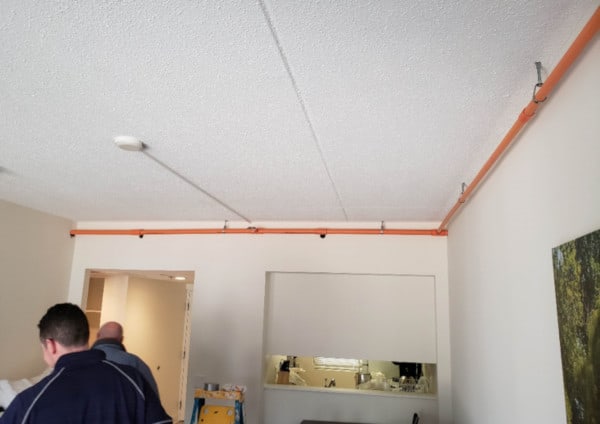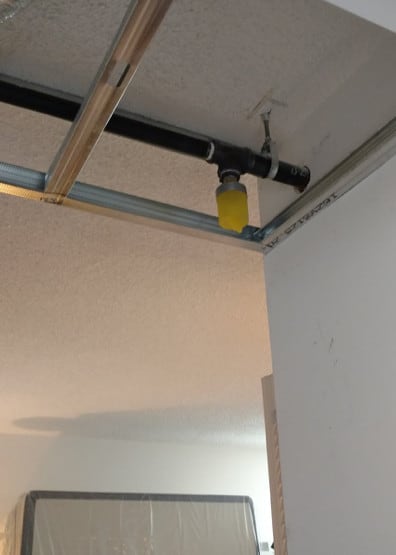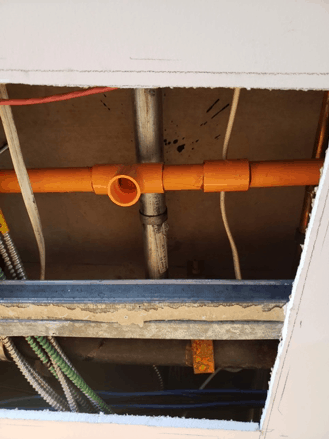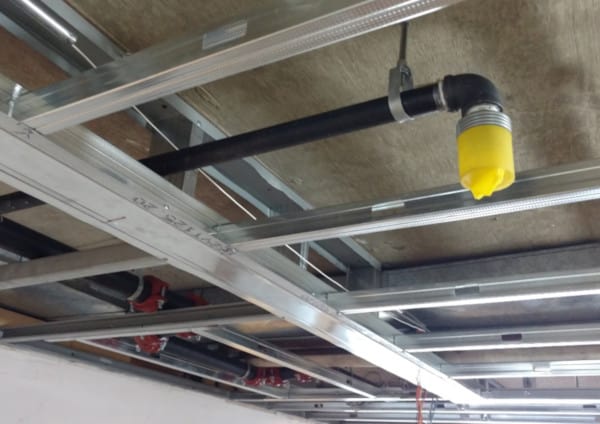Staging a major fire sprinkler retrofit, engaging local stakeholders, and meeting compliance timelines and standards are key
Retrofitting fire sprinklers into existing buildings is a process that involves several stakeholders, distinct stages of installation, and different fire protection systems. Many decisions need to be made by numerous parties before the first piece of pipe is put in. The construction process usually occurs in occupied buildings where people are living or working, and the fire protection systems being installed can vary in complexity and the extent of protection. A retrofit of an existing building does have its challenges, but the rewards are life safety and safeguarding property for generations to come.
Local fires often spur local sprinkler retrofit laws
The decision to retrofit commercial buildings is typically done on the local regulatory level when a city council enacts an ordinance to protect citizens. This decision, unfortunately, often comes after a major fire within the community. For example, the City of San Antonio, Texas, enacted a high-rise fire sprinkler retrofit ordinance after five deaths in a senior high-rise community in 2014, and Pittsburgh, PA, is currently haggling over a proposed retrofit law in the wake of a May 2017 high-rise fire that killed one person and injured several others. These deaths were likely preventable had the buildings been equipped with fire sprinklers.
There are several major stakeholders who must provide input when an ordinance is being developed. Facility managers, building managers, residents or business tenants, and contractor associations are essential to the process and should be involved to provide constructive feedback on local conditions, the impact of the project—both financial and disruptive—and construction and installation practices.
A fire sprinkler retrofit demands smart project management
Retrofitting fire sprinklers in an existing, occupied structure is challenging, and some buildings, such as high-rise residences, can be even more complicated than something like an office high-rise. Staging the construction process and the coordination of all the trades, occupants, and building management personnel involved are key to success.
The Saligman House, a residential apartment high-rise in Philadelphia, was successfully retrofitted with fire sprinklers in 2014. To do it with a minimum of inconvenience, apartments were grouped together on each floor, and each group went through the entire installation phase in just a few days. Prior to beginning the renovation, management assisted residents in moving furniture into areas of the individual unit not affected by the project.
Every morning, the residents of the group who didn’t leave the building for the day could stay in a dayroom that featured activities and lunch. Construction crews left the units clean at the end of a workday and residents were able to come back to their apartments and sleep in their own beds. Each group of units transitioned into different stages of demolition, installation, patching, painting, and cleaning on consecutive days. The entire cycle took approximately four days and residents experienced minimum disruption for a huge improvement in fire safety.

Compliance scheduling for retrofitting fire sprinklers
Every local retrofit ordinance prescribes the extent of the fire sprinkler system or other safety system retrofitted within a building and a schedule to get it done. It is crucial for building owners to pay attention to the timing of the ordinance and the type of system that must be installed.
The “countdown” to retrofit in a community can vary. Many ordinances, fire codes, and life safety codes give approximately twelve years to complete a project after a certain event. There is no magic formula that determines this deadline, other making sure it is attainable and reasonable for business owners. The clock starts either by the enactment of the ordinance, such as with the City of Chapel Hill, North Carolina’s mandate for bar and nightclub retrofits, or upon a building’s written code violation cited by a fire marshal or another authority having jurisdiction (AHJ); an infraction typically violating requirements stipulated by a local government’s adoption of a specific model code, such as the International Fire Code (IFC).
Some retrofit ordinances, like the City of San Antonio’s, also require stakeholders to report progress in stages every few years on a schedule similar to the following:
- 3 years: File a compliance schedule
- 6 years: Install the water supply to all floors
- 9 years: Install sprinklers on 50% of the floors
- 12 years: Install the remaining sprinklers on all floors

What standards apply to a community-mandated retrofit?
Fire sprinkler system installation standards can vary with each ordinance, and not all ordinances are limited to fire sprinklers. Others reference model codes such as Chapter 11 of the International Fire Code, which may also involve retrofitting standpipes, fire alarm systems, or passive fire protection elements like fire-rated walls, floors, and ceilings.
A common question and occasional stumbling block is determining the required extent of the fire sprinkler system when one must be installed. For example, does the sprinkler system have to comply with codes and standards as if it were installed in a new building? That answer is usually found within the adopted ordinance and/or the version of code—but there are four typical fire sprinkler retrofit paths:
1. Protect the common areas. Fire sprinklers are installed in corridors, dayrooms, laundry rooms, and other common spaces, thus avoiding the residents’ units.
2. Protect the common areas with one sprinkler above the resident unit doors. This set-up provides one sprinkler inside the unit for limited protection but enables an economical expansion of the system inside the unit at a later date. It is commonly referred to as the “Dorothy Mae” system in some areas of the country.
3. Provide an Engineered Life Safety System (ELSS) instead of full sprinklers. Some model codes and ordinances, such as Florida’s recent retrofit requirement for high-rises over 75’, allow an “equivalency” of an “engineered life safety system” that provides equal or superior protection to a full sprinkler system. The previous definition of an ELSS was derived from section 31.3.5.11.4 (2017) of NFPA 101: Life Safety Code before the 2021 edition.
An ELSS had to be designed by a registered professional engineer and approved by the AHJ, and must contain some or all of these items:
- Partial automatic fire sprinkler system
- Smoke detection system
- Smoke control system
- Compartmentation
- Other approved systems
A common ELSS equivalency uses partial sprinkler coverage with an updated fire alarm system and some other improvements.
Since the 2021 edition, NFPA 101 instead offers a “performance based design option” for a life safety system with various requirements specified in chapter 5 (2024 edition: A.31.3.5.9).
4. Provide sprinklers throughout the building. This fully sprinklered option means retrofitting fire sprinklers completely follows NFPA 13: Standard for the Installation of Sprinkler Systems, and arguably provides the most complete level of property protection and life safety. This is the same level of protection that is found in all new high-rises and new assembly buildings.

Communities benefit from fire sprinklers
Retrofitting fire sprinklers into existing buildings built under older codes and standards does have several advantages over a new installation. Fire codes and existing building codes allow many of the fire-resistance ratings to be reduced compared to if the structure had been built from scratch. This means door ratings and door closers are eliminated while allowing new glazing to be installed, which would be prohibited in a new installation.
Building owners and residents can also rest assured that fire will not impact them as it has in numerous tragedies, plus insurance premiums are significantly reduced for sprinklered properties. Increasing the fire protection of an existing building or community is a large undertaking, but it is never done in vain. Its life safety value is immense and can last for generations.
If you’re looking to buy components for a fire sprinkler system, whether it’s a retrofit project, a new installation, or you need simple replacement parts, check out QRFS’s selection of commercial sprinkler heads, as well as our sprinkler gauges, valves, supervisory devices, and other system components.
If you have any questions about retrofitting an existing structure or need help finding an item, give us a call at 888.361.6662 or email support@qrfs.com.
This blog was originally posted at blog.qrfs.com. If this article helped you, check us out at Facebook.com/QuickResponseFireSupply or on Twitter @QuickResponseFS.



What year was this done? Did the building have asbestos?
Susan — If you are referring to the Saligman House retrofit, it was 2014 (date in this blog updated). NFSA wrote a piece after this QRFS blog that details the project — yes, there was asbestos, and NFSA details how it was handled.